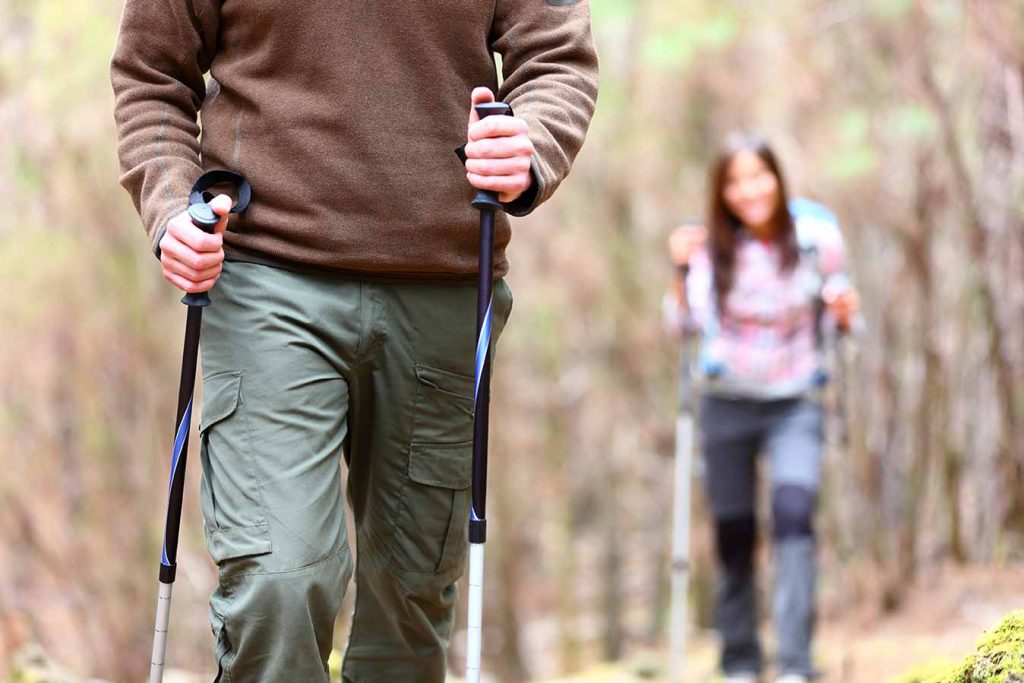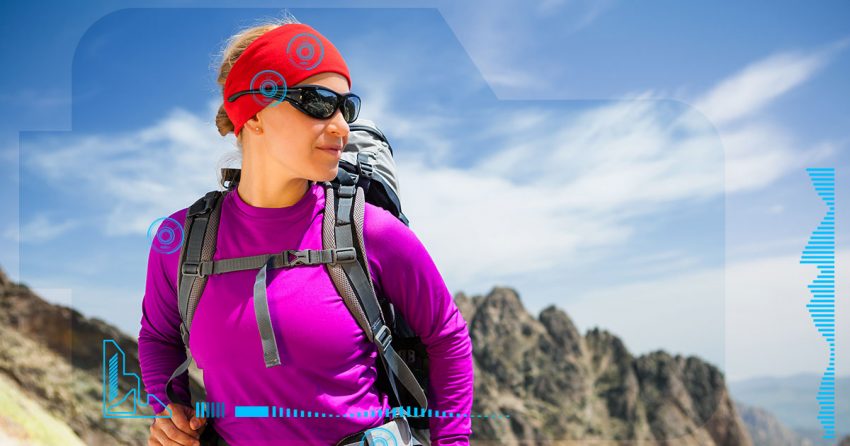As with many events in our daily lives, choosing what to wear hiking is a key aspect of preparing to go on a hike. Whether you are an avid hiker or just getting started the last thing you want on a day of leisure is to be uncomfortable or hurt yourself on a hiking trail. Fortunately you have leeway when choosing your hiking clothing and the ideal apparel may vary based on weather and trail conditions. This article will help point out some general ideas to keep in mind when getting ready for your hike. When it comes to wearing clothes there is plenty of personal preference and this article is a guide to help check all of the boxes one should consider.
Protecting Your Face & Head
In order to have a comfortable hike, there are 3 key things to remember involving your head and face.
Hiking Hat
Bringing a hat on a hike is essential and easy, as it can be worn to help prevent getting a sunburn on a sunny day, or it can be packed in your bag if it’s cloudy or you are spending your time in the shade. The type of hat you wear is totally up to you. If you’re an avid hiker, you may want to invest in a hiking hat, which has a wide brim that helps keep your head and neck shaded. On the other hand, if you are new to hiking and are unsure if it is something you will continue to do, a baseball cap will also work just fine.
Sunglasses
Having a pair of sunglasses is also very important and follows the same idea as bringing a hat: you can wear them if the sun is out or easily pack them in your bag if it is cloudy or you are in the shade. The kind of sunglasses you bring is also up to you. In my family, if someone forgets to bring their sunglasses to the beach, we solve the problem by picking up a cheap pair from a Dollar Store. When hiking, there is a risk of potentially breaking or losing your sunglasses, so these may work well for you as well. Of course, you can always break out the Oakley’s if you have them, but just know that something could potentially happen to them.
Prescription Glasses/Contacts
This tip serves as a reminder, but if you need glasses or contacts to see, remember to bring them on a hike. Being unable to see would not only make a scenic hike unenjoyable, but it could also cause you to trip and fall. If you do not wear contacts, you may want to invest in a pair of prescription sunglasses or transition lenses, as this will make your hike more enjoyable.
What to Wear on Your Torso
This is an area where the weather really comes into play and the ultimate goal is to choose what you will be most comfortable wearing. Listed below are some various ideas to keep in mind when getting dressed.
Consider the weather
Choosing a Shirt on a Hot Day: Especially during the summer months, it is very important to take the heat into account when getting dressed for a hike. As with most physical activity, issues involving the heat, including dehydration and heat exhaustion, are concerns when going on a hike. While drinking water and taking breaks when necessary are the most important ways to help prevent heat related problems, wearing a breathable shirt can help keep you cool and limit sweating. It is ideal to sweat as little as possible when hiking in the heat as this can help prevent dehydration, so it is smart to do anything that could help. Any sort of athletic wear will be breathable but lightweight cotton shirts are also good choices.
Sleeves will better arm you for the hike (pun fully intended)
Short Sleeve vs Long Sleeve Shirt: As for choosing a short or long sleeved shirt, there are advantages to both. A short sleeved shirt is likely going to be more comfortable on a hot day and will also help keep you cool. On the other hand, a lot of hikers choose to wear long sleeved shirts no matter the weather, as the sleeves help protect your arms against bugs or branches that may be impeding the trail. If you do choose to wear a long sleeve shirt on a hot day, it is even more important to make sure to choose a light, breathable shirt to keep from getting too hot. If going with shorter sleeves on a hot day also remember to apply sunscreen liberally.
Layers keep the options open
Layers on a Cold Day: I’m sure when you were growing up your parents or teachers told you to wear plenty of layers on a cold day since you can always take off a layer if you get too hot. This advice is perfect for a hike on a cold day. The number of layers you wear is up to you, and largely depends on how you handle cold weather. I tend to handle the cold a little bit better so I would probably choose to wear a merino wool long sleeve shirt as my base layer and a sweatshirt as my outer layer. The important thing to keep in mind for your base layer that it wicks moisture. This will keep you warm and dry.
Additionally I usually bring along another coat just in case I need it. Obviously a rain jacket is a good idea should the conditions warrant it. I would highly recommend you pack a larger winter coat in your hiking bag, as this may not be needed since hiking is a strenuous activity, but could be used in the case of an emergency.
How about those hands
Gloves: This one’s very dependent on the weather, as gloves are really only needed on a cold day. It may be smart; however, to just keep a pair in your hiking bag so you have them for the cold days or in case of an emergency. Any gloves work, but athletic brands often make gloves for outdoor physical activity, so these are well suited for hiking.
What Kind of Pants to Wear

Regardless of the weather, wearing long pants is a smart idea when going on a hike. While you can wear shorts if you really want to, long pants help to protect against bug bites, poison ivy, or any brush that may be present on the trail. As with most articles of clothing, you can invest in a pair of hiking pants if you are a committed hiker. These lightweight cargo pants are optimal for hiking as they protect your legs and dry quickly, which helps keep you from getting weighed down by sweat or water. If you don’t want to purchase a pair of hiking pants, you could also wear athletic pants or yoga pants, which are good options as they are comfortable and designed to be worn during physical activity.
Socks and Footwear
There is a lot of flexibility when dealing with socks and footwear when hiking. Weather and terrain are the two most important parts of a hike to keep in mind when you are picking these important parts of your hiking day apparel. Footwear made of waterproof breathable material is highly recommended.
Hiking Boots
I would say that if you plan on hiking even somewhat regularly, a pair of hiking boots are probably a good investment. Just like high top shoes in basketball or cleats for football, hiking boots are specifically designed for making your hikes easier. While there are trails where you get away with just wearing your tennis shoes, you certainly cannot go wrong with a pair of hiking boots, and they are highly recommended for more difficult, uneven trails. If you choose to invest in these hiking boots, you may also want to get some hiking socks. These socks are made from a variety of materials, with wool being the most common, so you can purchase a pair that is most comfortable for you. The key thing to remember when choosing your socks is to make sure they come above the top of your boots in order to help prevent discomfort or potential blistering. If you do not want to purchase a pair of hiking socks, make sure to wear another sock designed for athletic activity, as these socks are designed to be moisture wicking. This is essential for hiking, as you want your feet to be as dry as possible to help prevent blistering.
related: Be sure to check out our recommended Hiking boots for women
Hiking Sandals
Sometimes hiking trails include bodies of water that you can swim in if you would like to. I’m sure you’ve experienced walking with wet socks and shoes before, so if you plan on swimming during your hike, I would recommend investing in a pair of hiking sandals. Certain types of hiking shoes can may also be appropriate for wet terrain given they are water resistant. These sandals are worn without socks, therefore allowing you to continue to enjoy your hike after you take a swimming break. The one potential drawback of wearing these sandals is that you run the risk of potentially scratching your feet on brush or picking up poison ivy, but if you think you can avoid these issues, purchasing a pair of hiking sandals is a smart decision.
And Finally…
DON’T FORGET SUNSCREEN AND BUG SPRAY!! I know these are not articles of clothing, but they are well worth mentioning in this article. Sun protection can never be stressed enough. You do not want to come home with a sunburn or bug bites, so these two items are very important to apply before you begin your hike and reapply during the hike.
Surely there will always be some cool gadgets you bring along but for apparel starters you should be well on your way to a great day of hiking!

